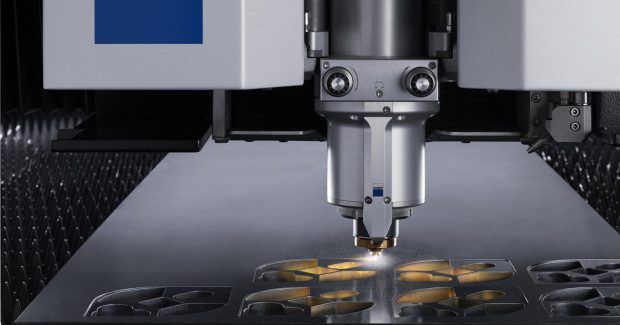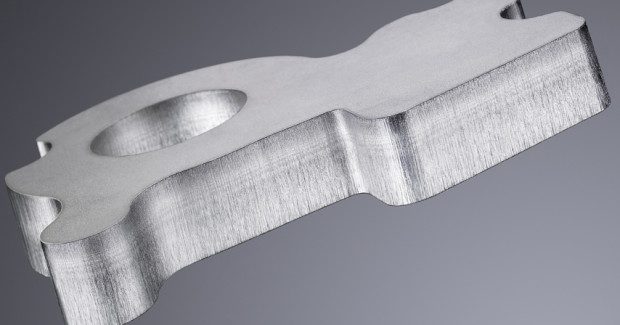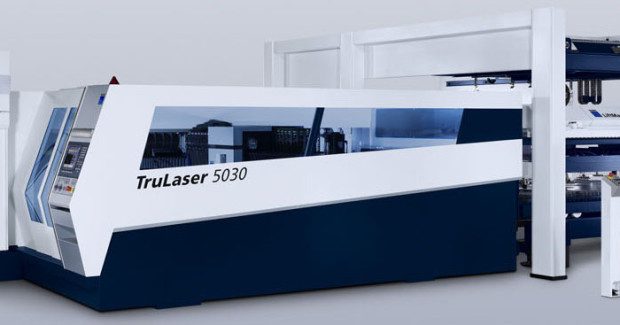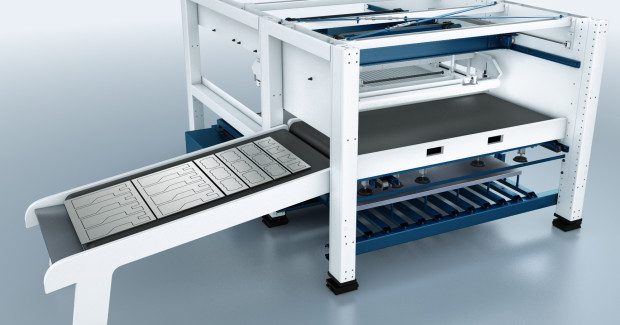Breakthroughs in Laser Cutting
Suddenly, the range of applications where CO2 lasers had an advantage is significantly smaller. For the first time, an all-purpose solid-state 2D laser cutting machine can cut all the standard types and thicknesses of materials at excellent quality without downtime – one of several groundbreaking technologies that will change the way shops choose to invest.
Posted: January 6, 2014
Regardless of the industry, fabricators have become increasingly more concerned with lowering the cost-per-part, reducing processing times and implementing flexible options in material handling to stay competitive.
As they look to invest in new machines, the major debate in 2D laser cutting over the last few years has been whether a solid-state or CO2 laser resonator best supports the applications and standard production needs of the shop.
A solid-state laser is the option of choice for applications in non-ferrous or highly reflective metals. The additional speed advantages a solid-state laser affords, especially when cutting thin sheet metal, is also advantageous for many applications, but if the fabricator primarily cuts thicker materials, the CO2 laser has proven to be the best choice for achieving the highest quality and speed.
However, when a solid-state laser is the best solution based on the part spectrum, fabricators may find subsequent steps in the manufacturing process cannot keep pace with the laser’s rate of production. Suddenly, the speed advantage of the solid-state laser machine might not be worth the extra investment costs.
Demonstration of a TruLaser 5030 fiber cutting 1 inch thick steel plate. Using a 5kW TruDisk laser, the cutting speed is 27 ipm. The solid state fiber delivered laser features outstanding speed on thin materials, but can also work the entire range of materials.
Luckily, with recent developments in laser cutting technology and material handling, new and flexible options have emerged to close the niche gap between CO2 and solid-state lasers more competitive than ever and increasing the capabilities fabricators have from their investment.
When choosing between solid-state or CO2 laser technology the decision was most frequently decided by comparing the cut quality of the parts at varying thicknesses, the speed it took to achieve it, the types of materials typically processed and the overall cost-per-part to determine the most appropriate laser source.
Manufacturers who decided to invest in a solid-state laser primarily processed thin sheet material or frequently used O2 flame cutting. CO2 lasers were typically chosen when applications in thicker material were the norm.
With the introduction of BrightLine fiber, the latest option available on the TruLaser 5030 fiber with a TruDisk 5-kilowatt solid-state laser, manufacturers are able to cut stainless steel up to 1 in thick at a cut quality equivalent to a CO2 laser equipped machine. In addition to boosting cut quality and productivity for mild steel between 0.6 in and 1 in, the BrightLine fiber technology also enables fabricators to produce small holes and execute tight contours in thick sheet metal.
The fully adaptive beam guidance system sets the laser focus automatically based on the material thickness. The change is done on-the-fly and within the TruDisk laser to maximize process reliability. Consequently, this system can cut all the standard types and thicknesses of materials at excellent quality without downtime.
This groundbreaking technology changes the way manufacturers choose to invest as suddenly, the range of applications where CO2 lasers have had an advantage is significantly smaller. For the first time, there is an all-purpose solid-state 2D laser cutting machine.
In addition to new options like this fiber technology, fabricators should also consider additional features of the machine or laser that influence purchase decisions, such as the ability to perform water-assisted laser cutting.
While processing, a water mist is directed at the laser beam as it reaches the work piece to reduce the heat transfer in the cutting zone. This enables the laser to cut contours that would otherwise be difficult or impossible to process including small sidewalls and difficult geometries in thick material. It also increases reliability when processing low-grade material or material of varying composition.
Additional capabilities the technology may afford might also help to expand capabilities in a unique way. For instance, if a solid-state laser is chosen, a laser cutting machine and a welding cell could share one laser source through a LaserNetwork. The ability to perform multiple processing steps with one laser may be highly lucrative for the right shop.
New criteria such as these enable companies with unusual applications or frequently changing demands to be more flexible and productive than was previously possible. In addition, fabricators should also consider their own preferences and experiences with running and maintaining a laser system.
Fabricators should also be aware of the various options for automation and software available for their 2D laser cutting systems. With a combination loading and unloading device the laser machine is fully automated to load and unload while the machine is in motion and within a minimal footprint. This can be combined with a part handling option that uses a conveyor to move processed sheets to a sorting station so an operator can unload parts while the machine is running.
With the flexibility to adjust the ergonomics of the working position, the operator can achieve maximum comfort and performance for a 30 percent increase in sorting productivity.
Developments like BrightLine fiber have made the solid-state laser increasingly competitive as an all-purpose machine, but solid-state and CO2 laser systems still exhibit individual strengths. As in other fields where differing technologies exist in parallel, both technologies will continue to be used.
It is important, therefore, to conduct an analysis of the specific needs of your shop and the plans for future growth so you can best determine which machine, laser technology, available options, software, automation concepts and other possibilities best fit your needs.








